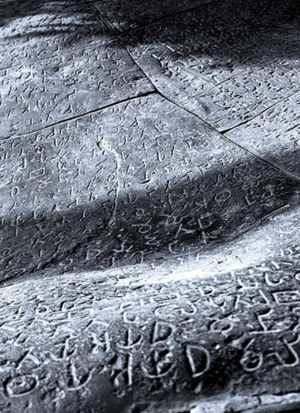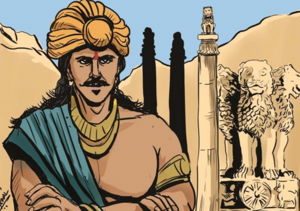Talk:Emperor Aśoka (ruled from 269–232 BCE)
By Vishal Agarwal
Aśoka, the grandson of Chandragupta Maurya, is remembered as one of the most distinguished rulers in Indian history. In his youth, Aśoka was reputed to be harsh and ambitious. Upon the death of his father, Emperor Bindusāra, he reportedly eliminated his rivals among the royal princes to secure the throne.
At the time of his accession, the Maurya Empire encompassed most of the Indian subcontinent except for the kingdom of Kaliṅga on the eastern coast. Determined to subdue this remaining independent region, Aśoka ordered a large-scale invasion. The people of Kaliṅga resisted valiantly, and tradition recounts that their final defense was led by the princess of the realm. Her courage deeply moved Aśoka, who later felt remorse for the devastation that followed.
After the victory, Aśoka toured the battlefield and witnessed the immense suffering caused by the war. It is said that over 100,000 soldiers and 150,000 civilians perished. Confronted by this scale of destruction, Aśoka experienced profound regret and moral anguish. During this period, he met a Buddhist sādhu who introduced him to the compassionate teachings of Bhagavān Buddha. Inspired by this encounter, Aśoka renounced violence and resolved to govern his empire through righteousness and peace, treating all his subjects as his own children.
To spread his new ideals, Aśoka had edicts engraved on rocks and pillars across his empire. Written in the Brāhmī script, these inscriptions constitute one of the earliest examples of written ethical governance. Modern Indian scripts, as well as several Southeast Asian scripts, trace their origin to Brāhmī.
Aśoka’s edicts emphasized the following principles:
- Refraining from violence toward humans.
- Avoiding harm to animals.
- Showing respect to parents, friends, and teachers.
- Offering charity to brāhmaṇas and sādhus.
- Honouring all faiths and refraining from claiming superiority of one’s own.
- Leading a pure and disciplined life.
- Practising the path of dharm.
- Working for the triumph of dharm rather than territorial conquest, and treating all subjects with compassion.
Aśoka’s renunciation of warfare marked a unique moment in world history—when a conqueror voluntarily embraced non-violence after victory. His armies were thereafter employed only for internal security and the suppression of rebellion, not for expansion.
The emperor also devoted considerable resources to spreading the teachings of Buddha beyond India. His son and daughter are said to have travelled to Siṃhaladvīpa (modern Sri Lanka) to propagate Buddhism, where it became the principal faith. Since Buddhism shares close philosophical roots with Hindu dharm, its spread carried with it several Indic beliefs and practices.
Aśoka commissioned the construction of monuments and stupas at sites connected with the life of Buddha. The Dharmacakra (Wheel of Dharm) depicted on one of his pillars was later adopted as a central emblem in the national flag of India.
Story: The Best Administrator in Aśoka’s Empire
On the occasion of his birthday, Emperor Aśoka invited the governors of all provinces within his empire to the royal court. He announced that a special reward would be granted to the governor who had administered his province with the greatest excellence during the past year.
One after another, governors stepped forward and presented their reports. Most of them stated the same achievement:
- “Your Highness, we have increased taxes and thus raised greater revenue for the royal treasury than in the previous year.”
Hearing this, the emperor rose from his throne and addressed the assembly:
- “I do not wish to enrich the treasury by burdening the people with taxes. A ruler must not exploit his subjects but regard them as his own children. It is the duty of a king to ensure their well-being, happiness, and prosperity.”
He then added,
- “Only the governor of Magadha has governed according to this principle of righteous rule. Therefore, the award of the best administrator shall go to him.”


